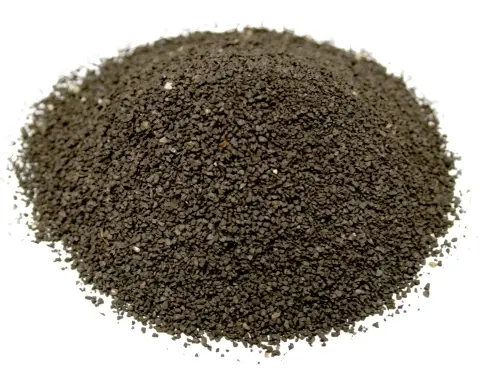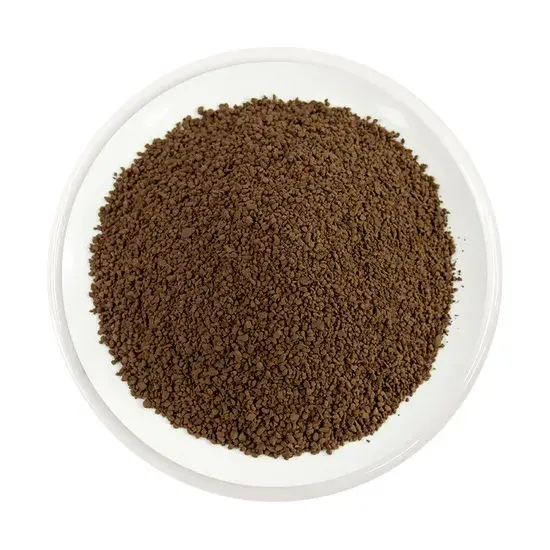Water treatment plays a critical role in providing clean and safe drinking water to communities worldwide. As the need for effective filtration systems grows, technologies like manganese dioxide coated sand (MDCS) have emerged as a powerful tool in improving water quality. This innovative material offers remarkable efficiency in removing contaminants such as iron, manganese, arsenic, and other heavy metals, making it an essential component in modern water treatment facilities.
In this blog, we will explore the mechanisms by which manganese dioxide coated sand enhances water filtration, its applications in removing harmful substances, and real-world case studies that demonstrate its effectiveness. By understanding how this material works, water treatment professionals and environmental engineers can make informed decisions when designing filtration systems.
Keytakeaways: manganese dioxide coated sand
Manganese dioxide (MnO₂) is well-known for its strong oxidizing properties, which make it highly effective in water treatment. When manganese dioxide coated sand is used in filtration systems, the manganese dioxide coating on the sand particles interacts with contaminants in the water, such as iron (Fe²⁺), manganese (Mn²⁺), and arsenic (As³⁺), causing them to oxidize and precipitate. This oxidation process results in the formation of insoluble particles that can then be filtered out of the water.
1.1. Removal of Iron and Manganese
In groundwater and municipal water supplies, high concentrations of iron and manganese can cause aesthetic and health-related issues. Manganese dioxide coated sand effectively removes these metals through a two-step process: oxidation and adsorption.
- Oxidation: The MnO₂ coating on the sand particles oxidizes dissolved iron and manganese ions (Fe²⁺ and Mn²⁺) into their insoluble forms (Fe³⁺ and Mn⁴⁺), which can then be easily filtered out.
- Adsorption: Manganese dioxide also adsorbs iron and manganese particles, trapping them on the surface of the sand grains, ensuring that they are removed from the water.
This process is particularly effective in groundwater with high iron and manganese concentrations, as it reduces the need for complex chemical treatments.
1.2. Arsenic and Heavy Metal Removal
Arsenic is a particularly dangerous contaminant found in some groundwater sources. It is a potent carcinogen and can lead to severe health complications if consumed over prolonged periods. Manganese dioxide coated sand is also highly effective in removing arsenic and other heavy metals from water.
The manganese dioxide coating on the sand particles creates an oxidation environment that converts arsenic from its toxic, soluble form (As³⁺) to a less harmful, insoluble form (As⁵⁺). The resulting arsenic precipitates can then be filtered out by the sand, leaving the water clean and safe for consumption.
This makes MDCS an excellent choice for water treatment plants in regions where arsenic contamination is a concern.

2. Case Studies
2.1. Case Study: Groundwater Treatment in the United States
A water treatment facility in California faced significant challenges with high iron and manganese levels in its groundwater supply. These metals caused staining in household plumbing and created unpleasant tastes and odors in the water. The plant was looking for a cost-effective solution to address the problem without relying on harsh chemicals.
The solution came in the form of manganese dioxide coated sand. After conducting a pilot study, the facility found that the MDCS was highly effective at removing both iron and manganese from the water. The oxidation and adsorption properties of the manganese dioxide coating helped reduce iron levels from 2.5 mg/L to below the acceptable limit of 0.3 mg/L, and manganese levels were reduced from 1.2 mg/L to 0.05 mg/L.
This case demonstrated the ability of manganese dioxide coated sand to improve water quality without the need for expensive chemical treatments. As a result, the facility adopted the use of MDCS in its full-scale filtration system, significantly improving water quality and reducing maintenance costs.
2.2. Case Study: Arsenic Removal in Bangladesh
In Bangladesh, arsenic contamination in groundwater is a major public health concern. Many rural communities rely on well water, which is often tainted with high levels of arsenic. A water treatment plant in the country implemented manganese dioxide coated sand to address this issue.
The plant tested MDCS in a series of filtration units and found that it successfully reduced arsenic concentrations from 0.15 mg/L (above the safe limit of 0.01 mg/L) to undetectable levels. The oxidation of arsenic from As³⁺ to As⁵⁺ and its subsequent removal through filtration significantly improved the water’s safety and taste.
This case study highlights how manganese dioxide coated sand can be used in challenging environments to remove harmful substances like arsenic, protecting public health and ensuring access to clean water.
3. Benefits of Using Manganese Dioxide Coated Sand
The use of manganese dioxide coated sand in water filtration offers several key advantages:
- Efficiency: MDCS removes a wide range of contaminants, including iron, manganese, and arsenic, effectively improving water quality.
- Cost-Effectiveness: Compared to chemical treatments, MDCS is a more economical solution, as it requires less maintenance and reduces the need for additional chemicals.
- Environmental Impact: The use of manganese dioxide coated sand is a sustainable solution, as it does not introduce harmful chemicals into the water and is recyclable.
- Scalability: MDCS can be used in both small-scale and large-scale filtration systems, making it suitable for a variety of applications, from household filters to municipal water treatment plants.

4. Conclusion
Manganese dioxide coated sand is a powerful tool for enhancing water filtration efficiency. Through its ability to remove iron, manganese, arsenic, and other heavy metals, MDCS is revolutionizing water treatment processes worldwide. Real-world case studies from the United States and Bangladesh demonstrate the material’s effectiveness in addressing water quality issues and improving public health.
As water treatment needs continue to evolve, manganese dioxide coated sand offers a sustainable, cost-effective solution for municipalities and industries looking to improve the quality of their water supplies. Whether it’s for removing heavy metals or ensuring safe drinking water, MDCS is poised to play a critical role in global water treatment efforts.
For more information on manganese dioxide coated sand and its applications, visit our related blog post on manganese filtration technology or explore our product offerings to discover how we can help improve your water filtration systems.

I am Edward lee, CEO of BTLnewmaterial, an engineer and international sales with more than 10 years experience
reach me to discuss more custom solutions for your business.
